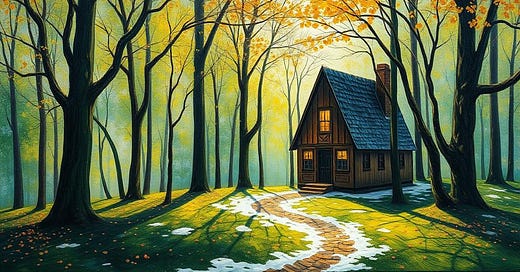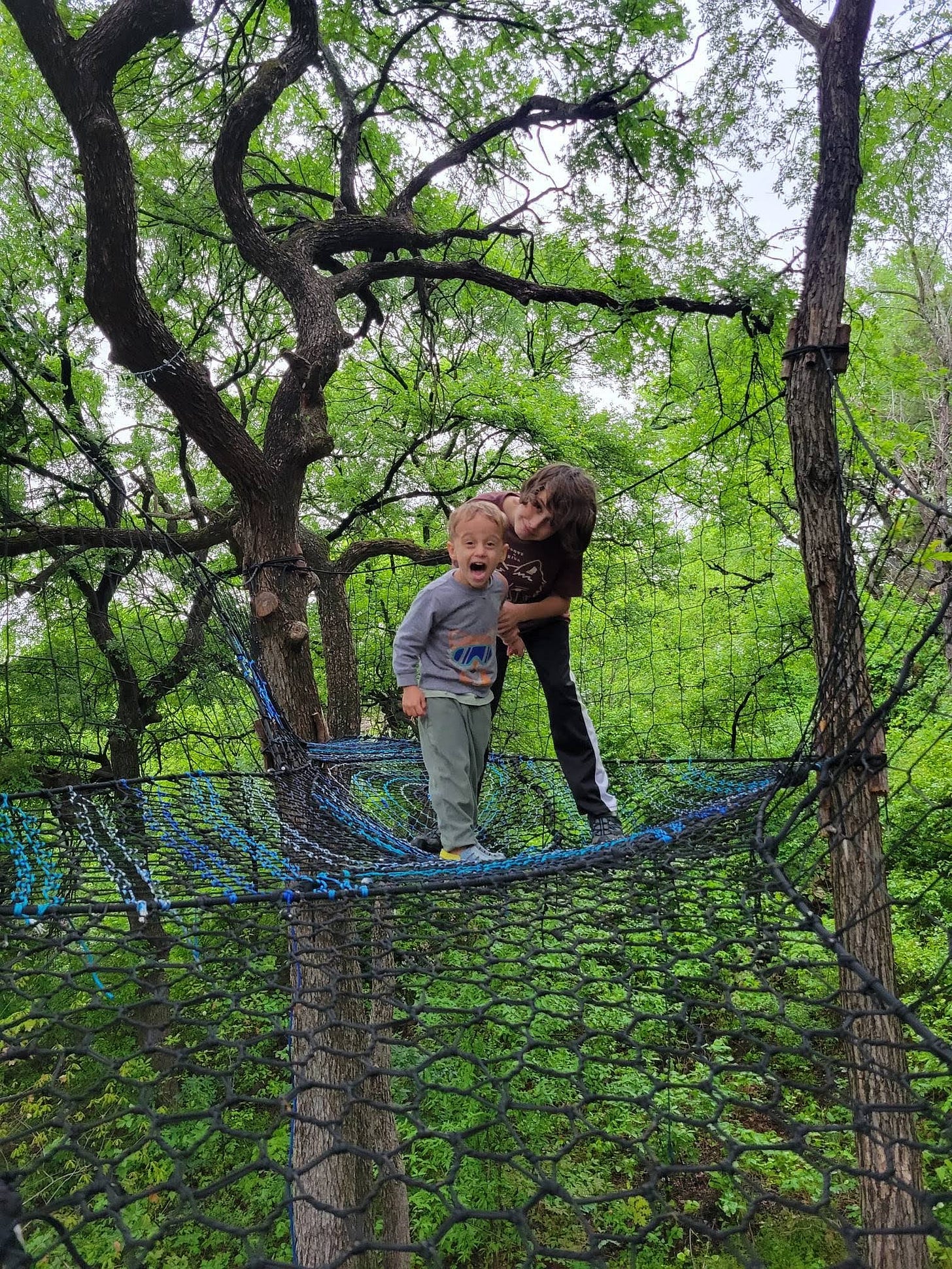The sun bared down as I knelt on the small patch of ground dedicated to the box of bulbs I’d given my sister-in-law. But my gift was also an act of service—planting them on their new property. The pronged hand rake sunk into the aged mulch, decomposed perfectly enough to be able to peel off in layers. New spring green was bursting everywhere in North Texas—not like back home in San Diego where the trees look no different than they did six months ago.
I had forgotten how much I love dirt-play. Back when I lived in Virginia, my lifestyle lent well to gardening as a mom of young kids. My neighbor would mentor me in the mysterious science of horticulture as my children sprayed water around us and drew chalk dragons on the sidewalk. But here, without land of my own, without children I’m homeschooling, plus a few years of health issues under my belt, gardening has been far from my mind.
It turns out that gardening is easy to recall, like riding a bike or remembering a second language. It came back quickly as I rested these bulbs in their bed of soil.
Poetry: Farewell | Winter | Welcome | Spring
Winter has been put to bed
And her children set free to play
I myself am blessedly stunned
On my bright patch of earth
Warmed by soothing rays
Home is these woods alive with chatter
A peaceful background melody unlike
The squabbling of mini survivalists
Held hostage by drafts in the
House of folded walls
Anticipation
I was convinced there needed to be three stanzas in this poem, but no matter how I sat with it, the third stanza just wasn’t to be. It leaves us hanging. As I considered it, so does Spring. That is the way of this season—it is anticipation.
Although Winter can feel like waiting, it is long and established—designed to hold us still. There is no point in fighting it (although we often do).
But Spring is different. Spring is sitting on the edge of our seats. Spring is the prompt to look for blooms.
"I wait for the Lord, my whole being waits, and in his word I put my hope.
I wait for the Lord more than watchmen wait for the morning, more than watchmen wait for the morning." (Psalm 130:5–6 NIV)
Lyrics
I’ve had bits and pieces of two songs stuck in my mind these past weeks. They repeat often enough in the songs themselves, but they’re continually lodged in my head.
Here I am by Chris Renzema and Moriah Hazeltine
Here I am, you have found me; here I am. (2x)
Winter has passed and the spring has arrived. (8x)
He’s gonna make it right, child.
His justice—oh—is coming. (2x)
When we see him we shall be made like him.
As we see the end of death and dying. (2x)
These lyrics are prayers I whisper as I dress for the day, walk around the village green with my toddler, and cook dinner. They embody the longing I feel, and the assurance I have found someone worth waiting for.
With these lyrics, I rise onto my tippy-toes, expectant and ready. I am like Zacchaeus watching from high up a large oak. I am the bleeding woman, sneaking up close, reaching for the God-man, Jesus.
Like Spring, I am ready to burst forth into purpose, wholeness, and shalom.
An Art Form
Gardening is an art form; it co-creates with God. It is an experiment in beauty. We mix the colors, add the right ingredients, and hope for the best.
Unlike other art forms, the resulting appearance of a garden feels very much outside our control. It might be our responsibility to tend it, but not to make it beautiful. We know that part isn’t our job.
As long as nature completes its course and we take care of it, a garden will be successful. We only need something to grow or bloom for it to be beautiful, even if it looks entirely different than we intended its design to be.
But with other forms of creativity, we take more ownership. Not only do we manage the tending, but we also feel totally responsible for the outcome. In this, the perceived quality of the art validates the artist. But what if all creativity is more like gardening? What if we can find beauty in every attempted expression, as long as it continues to mature?
The Hand Rake
In the spirit of Spring, I thought it was appropriate to share the results of a conversation that I had with ChatGPT about hand rakes. May these alternative creative names for this basic tool also prompt your imagination of how you need to attend to this season.
🌿 Poetic or Metaphorical Names for a Hand Cultivator:
Soil Whisperer – it stirs the ground softly, drawing secrets from the earth
The Root Dancer – teasing roots loose with delicate but determined fingers
Three-Fingered Muse – coaxing beauty out of buried places
The Ground’s Composer – crafting rhythms beneath the surface
Pronged Prayer – hands folded toward heaven as they press into the dirt
Earth’s Paintbrush – sketching the first strokes of the season
The Wake-Maker – stirring slumbering soil awake
Hope’s Little Fork – because every tug is an act of expectation
The Tender’s Trowel – for the caretaker of quiet places
Which of these speak to you the most? Which one do you need for this Spring? Why? I’d love it if you commented or replied to this email and let me know!
Planting
I’ve finished my season of active book launching (thank you to all who’ve helped me in this push!) and I’m finding myself at another fork-in-the-road. I know I haven’t gone in a circle—I’ve come far. Yet, I feel like I was just here exactly a year ago after my last trip to Texas. At that time I chose the road of experimenting with self-publishing and accepting a column at Patheos. What will I choose now?
In general, Spring break is already a natural pause-space, where I reevaluate how the beginning of the year has gone. This also means taking stalk of what is already in the ground.
One of the misconceptions about planting is that it must happen all at once. This might be true for a garden or farm, dependent on the annual weather patterns. Yet, in our less-intimate-with-the-earth’s-rotation part of life, which is likely much of it, we are planting all the time. When I move onto a new focus, or a new set of 90-day goals, I am not starting from scratch. I am joining with the roots of what I might have already spent years establishing.
Once the snow melts we can finally see the paths that are open to us and what’s already been planted. Sometimes in this we discover that we ourselves are being made new; we too are Spring.
Release
Winter fever is a real thing. I might have enjoyed the seasons, but that didn’t minimize the Seasonal Affective Disorder I experienced when I lived in Virginia. Children bouncing off the walls indoors only exasperates this. When they are finally released to play in the sun all day, they aren’t the only ones who experience freedom.
I’ve noticed that as a parent I often experience this same sense of release when one of my kids learns a new skill or masters an area of responsibility. Right now we are weaning my youngest from his nighttime bottle and I’m about to embark on potty-training. I know this will be short-term misery and have been putting it off. But I also know how rewarding it will be for all of us for him to mature in this way.
I see this as a truth that bridges into many areas of our lives, from parenting, to work, into health, and healing from trauma.
When the responsibility of managing chaos is removed, our nervous systems continue onward in their heightened responses. We’re still left swaying, if not reeling. It can be extremely difficult to notice that the trees are now blooming. Can we see the season of transition?
Our bodies and brains must also step into Spring. Otherwise we might stay spinning without peace, stunned in the weak sunlight.
Presence
As I visited my family, I put away social media and I didn’t even attempt to write or work. I was totally present in a way I am typically not. That’s how I found myself digging in the ground, pulling out rotting stumps preparing the way for something new and beautiful to be planted.
There is almost no better way to describe Spring than by its presence. Presence is what prepares the ground to receive or bring forth what is ready to grow. Do you also need to be anchored with presence in order to recognize transition?
Surprise
Even while enduring a few days of dripping cold, it was hard to imagine what my brother kept trying to convince me of—that the trees had filled out in luminous green only over the last week. Like most things, there is no way I could imagine the absence of what now is.
Spring slips in quietly, surprising us with color where before there was only gray. While so much preparation happens in unseen spaces and moments, the day will always come when we notice that tendrils are peaking up from the new mulch, our lives are showing the fruit of maturity, and nervous system is ready to find rest. We see the paths laid out—both our hopes for tomorrow and longing for eternity—and the Spirit whispers that Spring has arrived.
The Third Stanza
We are ready;
We attend with presence.
We keep preparing, planting, and tilling.
We step into the dappled light—alert, expectant, open.
We don’t have to force the third stanza. We simply anticipate its arrival. We have faith that what is blooming, even if not what we expected, will be beautiful—for as we create alongside the Master Gardener we trust that he will do his job well.
You can find past posts visiting AuthenticallyElisa.substack.com
Follow me on Instagram here @AuthenticallyElisa
See what’s new on my Patheos column: Flourishing Faith and Justice
If you liked this essay, you might also like Hope Rising: The Earth's Heartbeat, the Mexican Repatriation, and Rebuilding on Hope
If this post was helpful, please tap the heart 🖤 icon, leave a comment, or reply to this email sharing something that stood out to you. Your engagement encourages me greatly. And when you engage here and/or share this, it helps these words reach others waiting for them.
Thank you.






